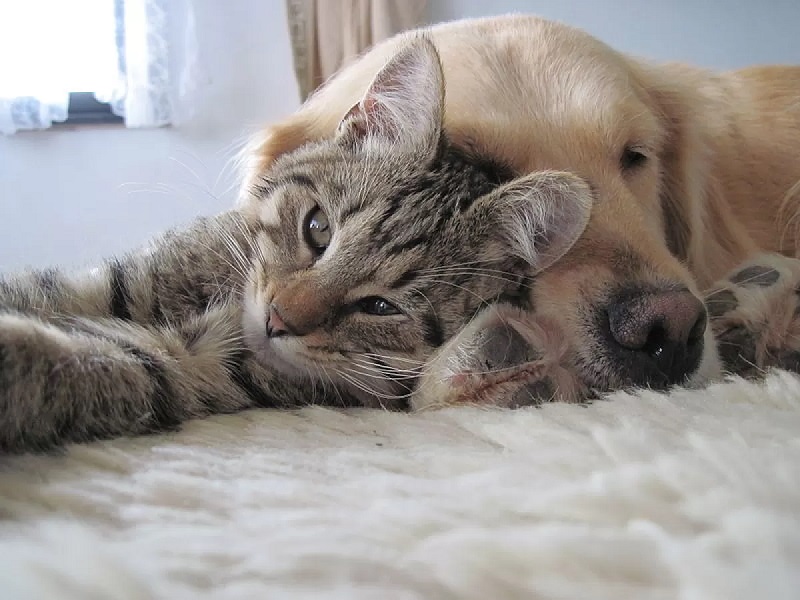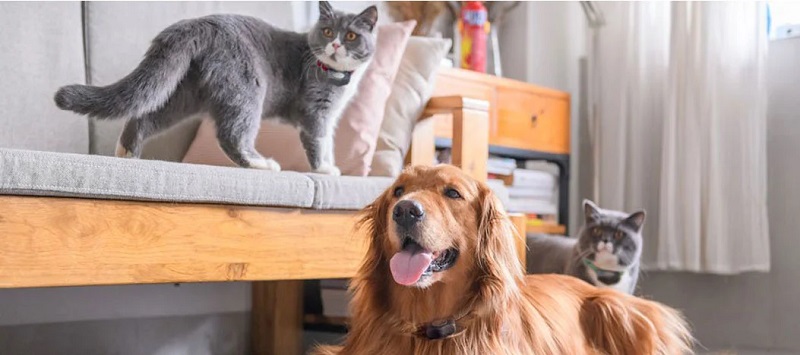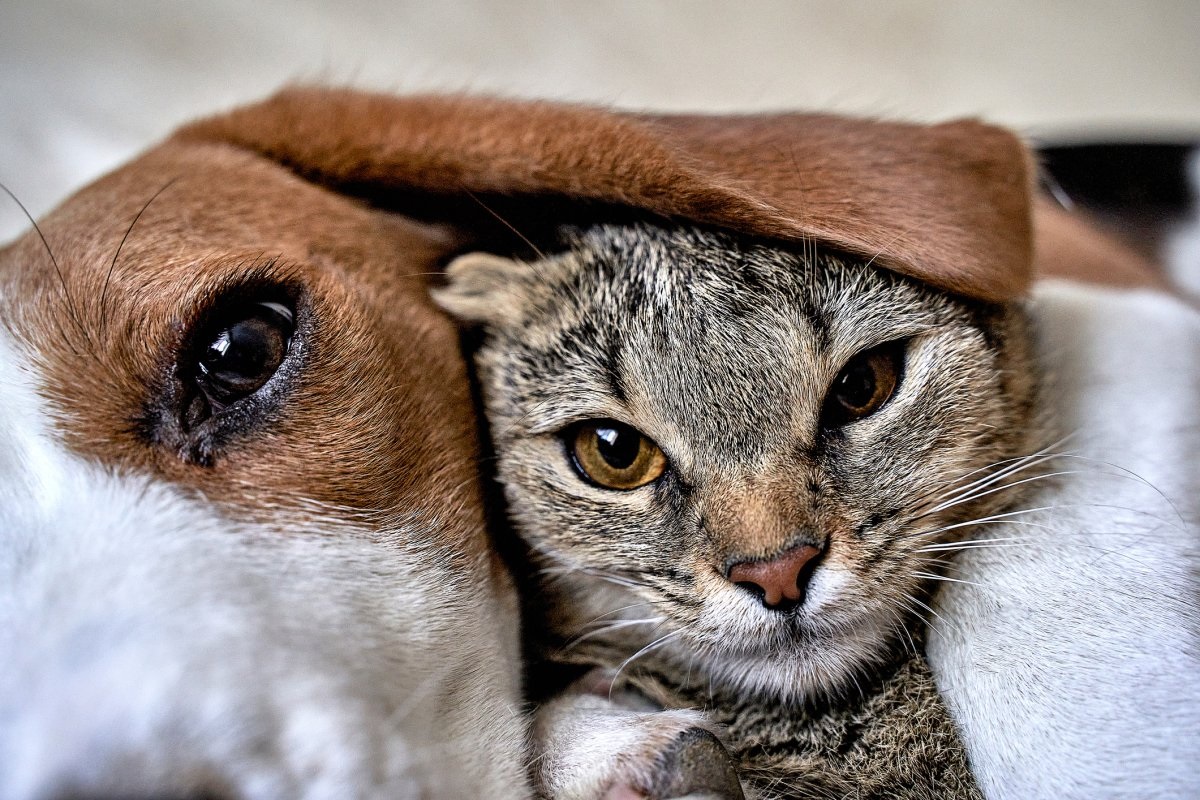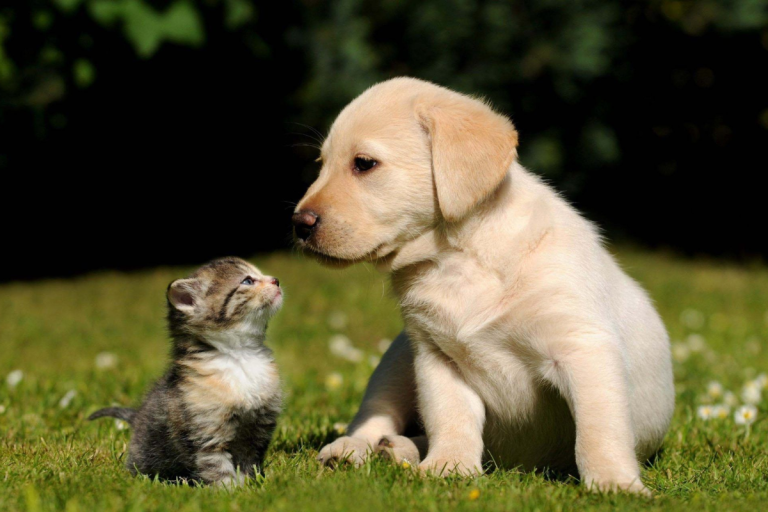Can Cats and Dogs Live Together Peacefully? Tips for Success
Introducing a
Understanding the Basics of Cat and Dog Relationships

When bringing a
Why Cats and Dogs Are Viewed as Opposites
Cats and dogs have often been seen as natural enemies, and for a good reason. Cats are typically more territorial and independent, while dogs tend to be social and, at times, a bit more excitable. This contrast often sets them up as opposites, but it’s really just a difference in instinct and behavior.
Natural Instincts and What They Mean for Coexistence
For many dogs, the urge to chase small, fast-moving animals is instinctive. Cats, on the other hand, are often cautious around new animals and may retreat or lash out if they feel threatened. These instincts don’t mean they can’t get along; they simply mean you may need to take extra steps when introducing them.
Preparing Your Home for Both Cats and Dogs

Creating a shared home environment for both cats and dogs is essential to foster a sense of security. Setting up areas specifically for each pet can prevent territorial disputes and make them feel more comfortable in their own spaces.
Creating Safe Spaces for Both Pets
Before bringing a
Designated Feeding and Resting Areas
Each pet should have its own space to eat and rest without being disturbed. This can prevent resource-guarding, where one animal might become defensive over food or sleeping areas. If they know they have their own space, they’ll feel more secure and less likely to act out.
Managing Introductions Carefully
The initial introduction is key to setting a positive tone. It’s wise to begin with short, supervised interactions while keeping the pets separated by a barrier, like a baby gate. Let them get used to each other’s scent before progressing to face-to-face meetings.
How to Introduce Cats and Dogs for a Peaceful Start
The first meetings between cats and dogs set the stage for their future interactions. A slow, managed introduction helps minimize fear and ensures both animals can adjust to each other’s presence at their own pace.
Step-by-Step Introduction Process
A gradual introduction process can prevent any surprises or territorial displays. Start by allowing the pets to smell each other through a door or a gate. After a few days, progress to short visual introductions while maintaining a safe distance.
Reading Body Language to Gauge Comfort
Watching how each pet reacts can help you gauge whether they’re feeling curious or threatened. A dog wagging its tail or a
The Importance of Gradual Acclimation
Forcing interactions can lead to fear or aggression, so a gradual pace is best. Short, positive encounters over several days or weeks allow both pets to adjust at their own speed, laying the groundwork for a more peaceful relationship.
Building Positive Associations Between Cats and Dogs
To nurture harmony, it’s beneficial to create positive associations for both pets. Rewarding good behavior and encouraging positive interactions can help them build trust and comfort around each other.
Using Rewards and Positive Reinforcement
Using treats, praise, and affection can reinforce good behavior during their interactions. Rewarding your dog for remaining calm or your
Structured Interaction Times
Start by setting up short, structured sessions where both animals are in the same room with you. This helps build comfort while maintaining control, so you can prevent any sudden outbursts or negative reactions.
Reducing Competition for Resources
By ensuring that each pet has its own toys, food, and bedding, you reduce the likelihood of resource competition. Pets that don’t feel they need to compete for resources are far less likely to show aggression.
Monitoring Behavior for Signs of Harmony or Tension
Keeping an eye on how your pets behave around each other helps in identifying potential issues before they escalate. Recognizing early signs of comfort or discomfort can help maintain peace and prevent conflicts.
Recognizing Friendly vs. Aggressive Signals
Both cats and dogs have unique ways of showing aggression or friendliness. Dogs wagging their tails at a low, calm pace or cats blinking slowly at a dog can be signs of acceptance. Aggression, like growling or hissing, however, indicates they may need more space and time.
Knowing When to Separate or Supervise
Sometimes it’s best to separate them to allow for a reset. If they’re becoming too agitated or territorial, give them a break. Supervised interaction is essential until you’re confident they’re comfortable with each other.
Signs of Bonding and Mutual Respect
When a
Maintaining a Peaceful Multi-Pet Household
Ensuring long-term harmony between cats and dogs involves setting consistent routines and boundaries. By establishing stability and managing interactions, you can foster a calm and balanced environment for both pets.
Consistent Routines and Boundaries
Establishing a routine helps your pets understand what to expect each day. Consistent meal times, exercise, and designated play sessions ensure stability and help reduce stress.
Addressing Conflicts Early
If you notice any signs of tension, addressing it early can prevent it from escalating. Sometimes a small disagreement can grow into a bigger issue if left unchecked, so take proactive steps to keep the peace.
Long-Term Harmony Tips
Keeping cats and dogs entertained and mentally stimulated is essential for a peaceful household. Regular exercise, playtime, and occasional treats help keep both pets happy and reduce the likelihood of conflict.
FAQs
Can any breed of dog live peacefully with cats?
Yes, many dog breeds can live peacefully with cats, especially those known for being calm and friendly. However, individual temperament matters more than breed alone.
What if my
If you notice stress, such as hiding, growling, or hissing, allow them to have some time apart. Slow introductions can help reduce stress.
How long does it usually take for cats and dogs to adjust to each other?
Adjustment times vary. Some pets may adapt within days, while others might take weeks or even months to feel fully comfortable.
Are there certain
Breeds known for calm dispositions often adapt better. For example, retrievers and some lapdog breeds tend to get along well with cats.
What are the best ways to keep my pets entertained and stress-free?
Provide individual playtime, toys, and opportunities for exercise. When pets have enough mental and physical stimulation, they’re less likely to act out.
Conclusion
Achieving harmony between cats and dogs in the same home may seem challenging, but with patience, preparation, and positive reinforcement, it’s entirely possible. By respecting each pet’s unique needs and managing their interactions carefully, you can foster a relationship based on mutual trust and companionship. It’s not about erasing their differences but creating a balanced environment where both pets can thrive together.


